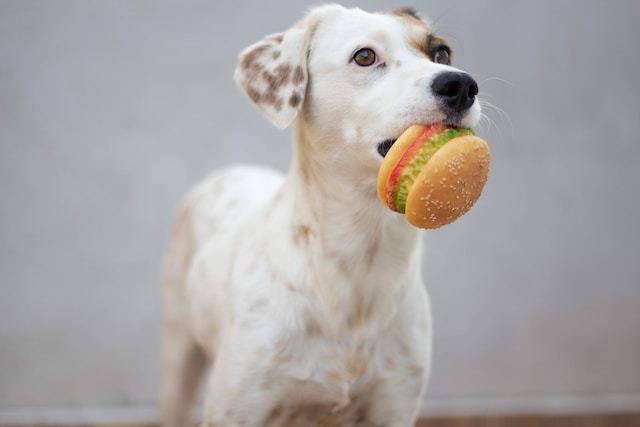As dog owners, we all want our furry friends to maintain a healthy appetite and enjoy their meals. However, some dogs can be picky eaters, which can be concerning and frustrating for pet parents. If your dog has a finicky palate and is often reluctant to eat, it’s important to address the issue to ensure its overall well-being. In this article, we will explore 6 effective strategies and tips to encourage your picky eater to develop a healthy appetite.

Understand The Root Cause
Before diving into solutions, it’s crucial to understand the underlying reasons for your dog’s picky eating behavior. Dogs can be picky eaters due to various factors such as health issues, dental problems, anxiety, or simply a lack of interest in their current diet. Observing your dog’s behavior and consulting with a veterinarian can help you identify the root cause and tailor your approach accordingly.
Enhance Mealtime Experience
Creating a positive and inviting mealtime experience can make a significant difference in your dog’s appetite. Consider the following suggestions:
a) Rotate Food Options: Offering a variety of high-quality dog foods can prevent boredom and spark your dog’s interest in mealtime. Experiment with different flavors, textures, and brands to find what your furry friend prefers. Gradually introduce new foods to avoid gastrointestinal upset.
b) Warm-Up Meals: Heating your dog’s food slightly can enhance its aroma and make it more appealing. However, ensure the food is not too hot to avoid any injuries. A warm meal can stimulate your dog’s sense of smell and entice them to eat.
c) Incorporate Toppers: Adding nutritious and dog-friendly toppers to your dog’s meals can enhance the taste and appeal. You can try sprinkling a small amount of shredded chicken, beef broth, or low-sodium gravy on top of their regular food to entice their appetite.
d) Introduce Raw Puppy Food: Enhance your dog’s mealtime experience by incorporating raw puppy food into their diet. By using raw puppy food, you can provide essential nutrients, enzymes, and natural flavors that elevate the enjoyment of their meals. Remember to consult with your veterinarian to ensure you’re offering a balanced and appropriate raw food diet for your puppy.
Establish a Feeding Routine
Consistency and structure are key to encouraging your dog’s appetite. Establishing a regular feeding schedule can help regulate their hunger and make mealtime more predictable. Follow these tips:
a) Set Fixed Meal Times: Offer your dog meals at the same time each day, preferably twice a day for adult dogs. Avoid leaving food out all day as it can lead to picky eating habits and disrupt their natural hunger cues.
b) Limited Time for Meals: Give your dog a specific amount of time, usually around 15-20 minutes, to finish their meal. If they don’t eat within the allocated time, remove the food until the next scheduled mealtime. This approach encourages your dog to eat when the food is offered, preventing grazing behavior.
c) Avoid Table Scraps and Treats: While it can be tempting to offer your dog scraps from your meals, it can contribute to picky eating habits. Stick to a balanced and nutritious diet formulated for dogs, and limit treats to appropriate occasions.

Seek Professional Advice
If your dog’s picky eating habits persist despite your efforts, it’s important to seek professional advice from a veterinarian or a veterinary nutritionist. They can conduct a thorough examination and help rule out any underlying medical conditions that may be affecting your dog’s appetite. They may also recommend specialized diets or supplements to address specific dietary needs. A professional’s expertise can provide valuable insights and tailored solutions to support your dog’s overall health and well-being.
Implement Food Enrichment
Food enrichment involves making mealtime more engaging and mentally stimulating for your picky eater. This approach can help spark their interest in food and encourage them to eat. Consider the following ideas:
a) Puzzle Feeders: Use interactive toys or puzzle feeders specifically designed for dogs. These toys require your dog to work for their food, stimulating their problem-solving skills and making mealtime more exciting.
b) Food Dispensing Toys: Fill food dispensing toys with your dog’s kibble or treats. These toys release food gradually, making the process of eating more challenging and rewarding.
c) Training and Rewards: Incorporate training sessions during mealtime. Use small portions of your dog’s regular food as training rewards. This not only engages their mind but also establishes positive associations with mealtime.
Monitor and Adapt
As you implement strategies to encourage your picky eater, it’s essential to monitor their progress and make necessary adjustments along the way. Every dog is unique, and what works for one may not work for another. Keep a record of their eating habits, preferences, and any changes you make to their diet. This information will help you understand what stimulates their appetite and guide your decision-making process. Be patient and flexible, adapting your approach as needed to ensure your dog’s nutritional needs are met.
Dealing with a picky eater can be a trial-and-error process, but with persistence and the right strategies, you can help your dog develop a healthier attitude toward food. Seeking professional advice, implementing food enrichment techniques, and monitoring your dog’s progress are additional steps you can take to support their appetite. Remember, each dog is unique, so it may take some time to find the approach that works best for your furry friend. With your love, care, and commitment, you can help your picky eater thrive and enjoy mealtime once again.



